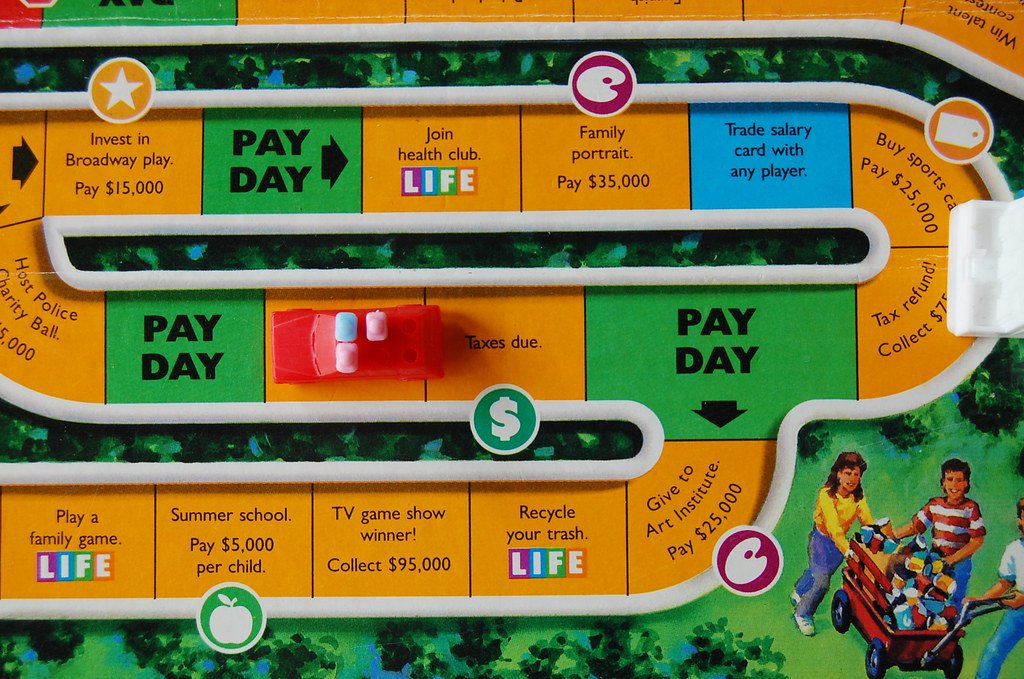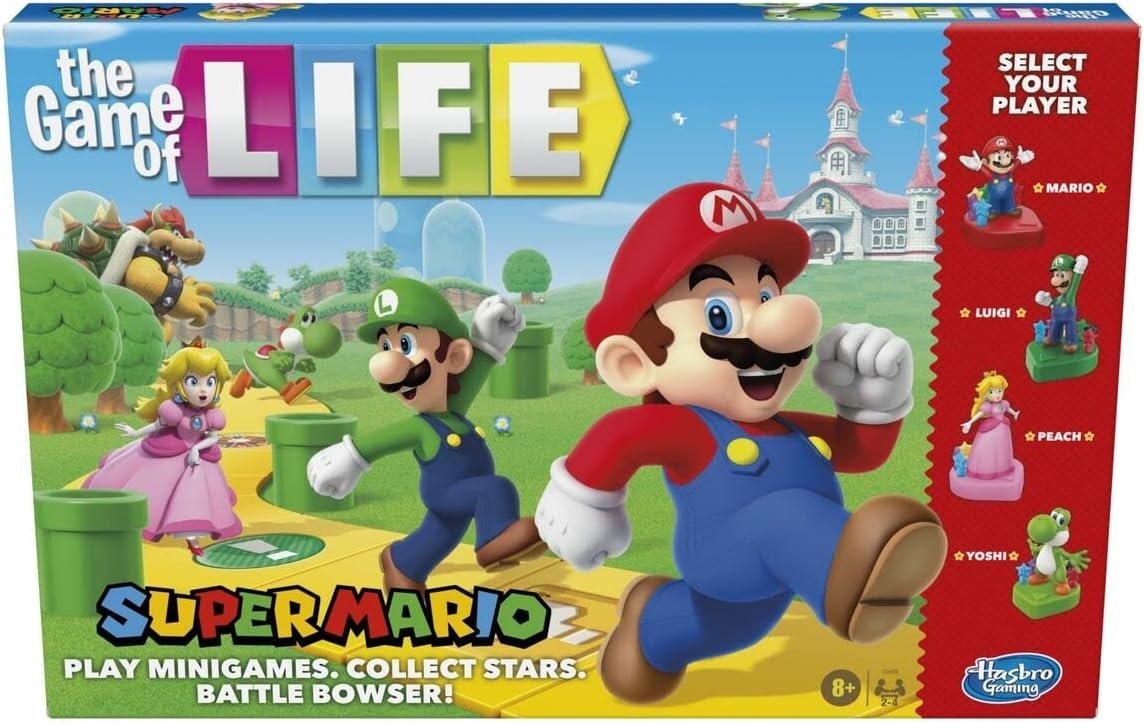Life is a fun and easy-to-play family game that can be enjoyed by two to six players.
Collect the most money and life tile value to win this classic board game!
Find the video tutorial and written explanation for how to play The Game of Life board game below. Every aspect is covered from the game setup, to the game play, determining the winner, and all the Game of Life rules in between.
The Game of Life Tutorial
Needed
Two to six players; Game of Life board game
Setup
The game board is setup by matching the letter on the bottom of each piece to the same letter on the board.
Separate the Life cards into four deck draw piles. The stock cards deck, the house deed cards deck, the salary cards deck, and the career cards deck.
Four Life tiles will be placed next to the Millionaire Estates building on the board.
Each player will choose a car token and add one blue or pink peg to the car.
The banker's bin will be set up with the money separated by denomination, the automobile insurance policies and bank loans separated, the Life tiles, and the blue pegs and pink pegs.
Each player begins with $10,000 from the bank.
Objective
The object of the game is to have the highest value of money and Life tiles once every player has reached retirement at the end of the game.
Game Play
The game begins with a player choosing to start a career path or start college on their first turn.
Start a career by drawing one career card and one salary card. Draw a different career card if the one drawn states, “Degree Required.”
To start college, take a $40,000 bank loan from the bank. The players that go to college will stop at the career choice space.
Players that go to college get to draw three career cards and three salary cards. The player will then choose one job option and one salary option they want to keep.
Each turn, a player will spin the wheel and move the equal number of spaces. Follow the directions of the space landed on. There are four colors of spaces.
Most spaces are orange, and a player must follow the directions of the orange space when landed on.
The blue spaces have directions that are optional. When landing on a blue space, the player can choose to follow the directions or not.
The green spaces are pay day spaces. When landing on or passing a green pay day space, the players will collect their salary amount from the bank.
There are three red spaces. The first red space is the career choice space where a player gets to choose a career after going to college. The second red space is the get married space where a player will add a spouse to their car and take a life tile. The third red space is the buy a house space where a player will draw a house deed card and pay the bank the amount listed on the card. If a player is short on cash to pay for the house, they will have to borrow from the bank.
If a player lands on a space with a LIFE logo, they take a LIFE tile from the bank. If the bank is out of LIFE tiles, steal one from another player. Exception - players retired at Countryside Acres cannot have their LIFE tiles stolen.
If a player lands on an orange space with a career symbol, they have to pay the owner of that career the amount stated on the space. If no player has the career, the player pays the bank.
If a player lands on a career change space, the player will draw a new career card and salary card option.
If a player decide to go to night school, the player will draw two career cards from the career deck and two salary card options from the salary deck. The player will then choose to keep their current career card or one of the new career cards. Do the same for the salary card options.
Once a player get to the retirement space, they will decide where to retire, Countryside Acres or Millionaire Estates.
Take a LIFE tile if retiring at Countryside Acres. Among the players retired at Millionaire Estates, the one with the most money gets to take the four LIFE tiles set aside at the beginning of the game.
Upon retirement, all bank loans must be paid back.
Winning
The end of the game comes once every player has retired, each player will add up the value of their money and LIFE tiles. The player with the highest value wins the game.
Additional Game of Life Rules
If a player's career is a police officer, anytime another player spins a 10 on the wheel, they owe the police officer $5,000, but the police officer has to notice the 10 spin to get paid.
At the beginning of any turn, a players can buy homeowner's insurance policies from the bank by paying the bank the amount listed for homeowner’s insurance on the house deed cards. This protects the player from some disastrous orange spaces.
At the beginning of any turn, a player can buy automobile insurance policies by paying the bank $10,000. This protects your car from any disastrous orange spaces.
At the beginning of any turn, a player can buy a stock card for $50,000 paid to the bank. When the number on your stock card is spun by any player, you collect $10,000 from the bank. A player can own only one stock card unless they land on the stock market space, then they can have two stock market cards.
$25,000 is needed to pay back bank loans of $20,000. The extra $5,000 is the interest.
The Game of Life Variations
The Game of Life is a classic board game that has seen various adaptations and variations over the years.
Traditional versions of the game simulate the major life events, where players make decisions about careers, education, and family, aiming to accumulate wealth and reach retirement. However, there are specialized editions such as The Game of Life: Junior designed for younger players, focusing on simpler life choices and family-friendly themes.
Additionally, there are a number of themed variations that bring beloved pop culture characters into the mix, adding a unique twist to the gameplay and the game board.
There are also digital versions and mobile apps that offer fresh gameplay experiences, ensuring that The Game of Life continues to evolve and appeal to a diverse audience.
DISCLAIMER: This page contains affiliate links, which means that if you click on one of the product links, I’ll receive a small commission at no extra cost to you. Thank you for your support!



